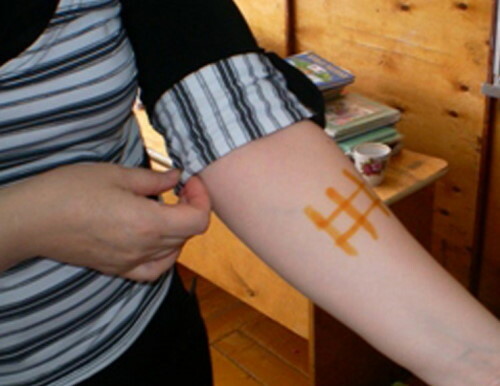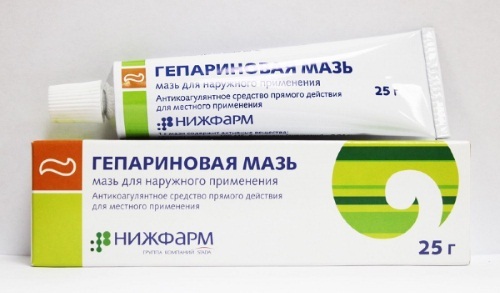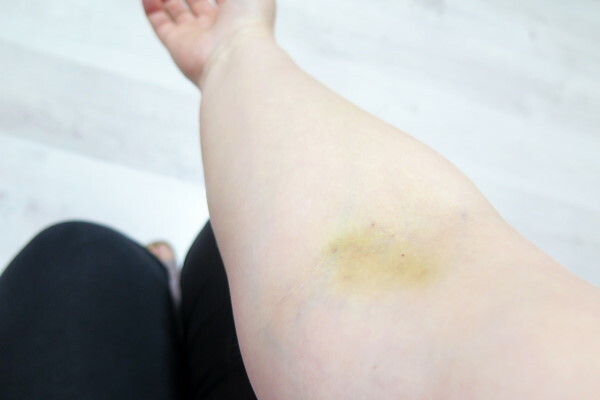Content
- Possible reasons
- Phlebeurysm
- Thrombophlebitis
- Poor blood clotting
- How to fix
- Thrombosis, varicose veins, thrombophlebitis
- Medication assistance
- Traditional medicine methods
- Possible consequences and complications
- Video about pain after donating blood from a vein
Blood from a vein is one of the most frequently prescribed laboratory tests., which will help to accurately diagnose and determine which organ is failing. This analysis is simple and does not require special preparation, it is submitted in laboratory conditions. But sometimes patients, after donating blood from a vein, complain of pain in the arm. There may be several reasons for the discomfort, and it is very important to establish them in order to remove the pain.
Possible reasons
Often, a hematoma at the site of blood sampling appears due to the inexperience of the healthcare professional performing the sampling. In this case, the patient feels slight discomfort at the site of the vein puncture.
Among the main causes of discomfort in the hand are:
- large needle;
- the laboratory assistant made a puncture in the wrong place;
- the syringe broke during the collection;
- the laboratory assistant poorly processed the puncture site;
- during the procedure, the vein was pierced through.
To avoid such inconveniences, it is better to contact a specialist.
Pain after donating blood from a vein in the arm is a common occurrence if the collection was done by a layperson. But a similar symptom may appear due to other reasons that have nothing to do with the laboratory assistant. Only a doctor can correctly establish the cause.
The norm is considered a slight soreness and a small hematoma, which forms as a result of blood flowing into the tissue after a vein puncture. If the pain does not go away, but on the contrary only intensifies, a fever appears and the general state of health has worsened, then an urgent need to go to the hospital for qualified help.
Pain after donating blood from a vein in the arm may also appear due to illness.
Phlebeurysm
More often, varicose veins affect the veins of the lower extremities, but in some cases, for example, during pregnancy or childbirth, even the vessels of the hands suffer greatly from this ailment. With this pathology, nodes are formed in the veins, the vascular walls become thinner and are characterized by increased fragility. It is for this reason that bleeding is possible during a puncture of a vein, surges in blood pressure or any physical activity.
Thrombophlebitis
If a person has increased blood clotting, or as a result of an infectious disease, a large thrombus forms in the vessel during blood sampling from a vein. As a result, the patient notices that the vein on the arm has become hard, hurts, looks dark, hard, and feels bursting and burning. As a result, after taking blood, the patient may experience swelling in the arm, the temperature rises, the skin becomes red, the discomfort spreads higher through the vein to the armpits and lower to the fingers.
As a result, the patient notices that the vein on the arm has become hard, hurts, looks dark, hard, and feels bursting and burning. As a result, after taking blood, the patient may experience swelling in the arm, the temperature rises, the skin becomes red, the discomfort spreads higher through the vein to the armpits and lower to the fingers.
Poor blood clotting
In some patients, pain in the arm after taking blood is poor clotting. That is why people with such a pathology simply need to warn the laboratory assistant who conducts the fence. He should be aware that it may be difficult to stop the blood. A natural blood clot, which should close a needle puncture in a vein with normal clotting, is simply forms longer than usual, which is why in such cases the formed hematoma is not a problem, but norm.
Some drugs, such as Aspirin and drugs prescribed to patients with a diagnosis such as arthritis, affect the blood clotting process. That is why a laboratory assistant must ask the patient from whom he takes blood, the question of what drugs he is taking and when was their last intake.
How to fix
Pain after donating blood from a vein in the arm is a common symptom that appears immediately after the procedure. Some effective methods that are recommended to be used after the onset of discomfort will help relieve discomfort. They are described in the table below.
| Means | Peculiarities |
| Cold | Ice should be applied to the vein puncture site. Under the influence of cold, blood vessels constrict, the intensity of pain decreases. They keep the cold for about a quarter of an hour, otherwise hypothermia can be provoked. |
| Elastic bandage | Bandage the arm from which the blood sample was taken. This action will stop the bleeding in the tissue and reduce the bruising. |
| Warmly | You can use a heating pad or a bath with warm water, which will expand the vessel, speed up the process of hematoma resorption and reduce discomfort. |
| Iodine | Apply an iodine mesh to the area of discomfort.
|
| Pharmacy funds | Drugs based on heparin or arnica will help. Such funds help to improve vascular function. |
Thrombosis, varicose veins, thrombophlebitis
A specialist can make a similar diagnosis to a person who has discomfort in the arm after taking blood from a vein. The diagnosis of thrombosis or varicose veins can be made by a surgeon or phlebologist. An ultrasound examination, an external examination are carried out, and only after that adequate therapy is selected. If the bleeding is due to varicose veins, then the first thing to do is to stop the bleeding.
To do this, a tight bandage is applied to the arm, it is better to use an elastic bandage, but in no case use a tourniquet. The tourniquet will not give any benefit, but it can cause serious injury to the vessels. The arm should be raised high up and held in this position until the bleeding stops.
If the cause of the pain lies in a diagnosis such as thrombophlebitis, then the vein after taking blood hardens and swells. In this case, only a doctor prescribes therapy. He can recommend compresses with magnesia, as well as topical preparations such as Lyoton.
These diseases should be treated without fail regardless of donating blood. These ailments create serious problems and in themselves are very dangerous to humans. Any minor damage to blood vessels can lead to severe bleeding, and if not stopped, it can even lead to death.
Patients, as a rule, must take courses of drugs that help to strengthen the vascular walls, and venotonics for oral and external use are also prescribed. The affected areas must be bandaged with an elastic bandage. In the most advanced cases, treatment consists of surgery.
Medication assistance
Drugs for external use, which are available at any pharmacy, will help to remove discomfort and hematoma:
- Troxevasin. It contains troxerutin. This substance helps to increase vascular tone, reduce capillary permeability. The medicine helps to remove puffiness, reduce pain and improve tissue trophism. You need to rub the drug up to 3 times a day for 3-7 days.
-
Heparin ointment. This drug contains sodium heparin and benzocaine. Thanks to these components, the ointment has an anti-inflammatory and analgesic effect. Helps resolve hematomas. Rub in 3 times a day.

- Hirudoven. The active ingredient is the extract of the medicinal leech. This substance tones up blood vessels, improves blood flow, and helps to cope with damage. Apply the product 3 times a day.
Traditional medicine methods
Pain after donating blood from a vein in the arm is not always a sign of a medical condition. This may be simply the ineptitude of the laboratory assistant, or it may simply be that the patient removed the bandage early and, as a result, a bruise formed.
Such simple folk methods will help to remove discomfort and hematoma in the area of a vein puncture:
- Take a cabbage leaf, slightly beat it off so that it lets out the juice, and then attach it to the elbow and wrap it lightly with a bandage. Leave the compress overnight.
- Take an aloe leaf, cut it in half lengthwise, attach it to the elbow bend at the puncture site of the vein during blood sampling, fix the sheet with a plaster.
- A compress with a drug such as Dimexide helps to remove the bruise well. Before the compress, the drug must first be diluted with warm water in a ratio of 1: 4. You need to apply a compress for several hours in a row, until the hematoma goes away, pain and discomfort disappear.
- Our grandmothers collected cherry seeds for future use and did this in order to heat them up in a frying pan, wrap them in a cloth bag and apply them to places where discomfort is felt. In this case, apply to the blood sampling site and keep the heated bones cool until they cool.

Pain after donating blood from a vein in the arm
These simple and affordable folk methods are aimed at warming up the hematoma and relieving discomfort in the hand. But if the cause has nothing to do with the disease, then the pain and bruise will go away on their own and very quickly. Trauma without additional complications is unpleasant, but it will not bring any harm to health.
Possible consequences and complications
Vein blood is one of the most important medical procedures. Venous blood helps in different cases to make a more accurate diagnosis, to make a fence for donation. The delivery of such an analysis is a serious moment and it is better to trust the fence to a professional who will definitely adhere to all stages, observe asepsis and do everything possible so that pain and hematoma in the arm are insignificant.
If the pain persists within a few days, then you should urgently seek the advice of a specialist.
Discomfort and hematoma can be a consequence of pathology, and the earlier the diagnosis is made, the higher the chance of avoiding complications and curing the pathology completely. It must be remembered that any delay, even a slight one, can threaten the development of serious pathologies and, in some cases, even the development of chronic diseases.
Pain in the arm after taking blood from a vein in the elbow joint is a natural reaction of the body, because soft tissues, skin and vein wall are pierced. A hematoma is also a natural reaction, since blood does not clot immediately and leaks from the puncture site under the skin. The delivery of the analysis is an important stage in the diagnosis, you need to entrust it to a professional and then the pain will be insignificant, it will pass quickly and there will be no complications.
Video about pain after donating blood from a vein
Malysheva about a lump after donating blood:


